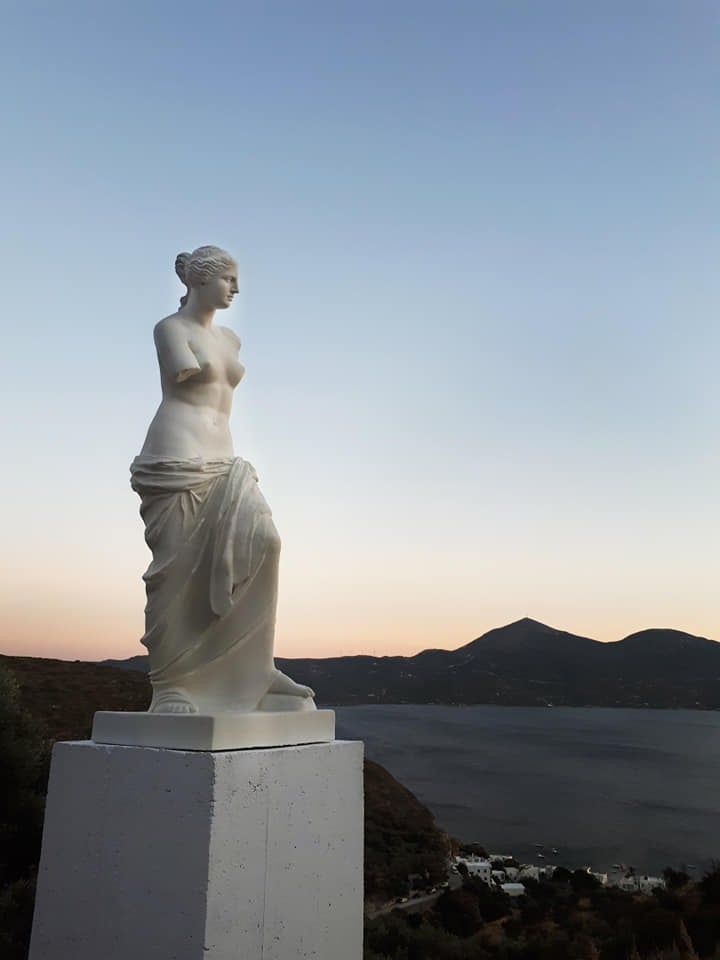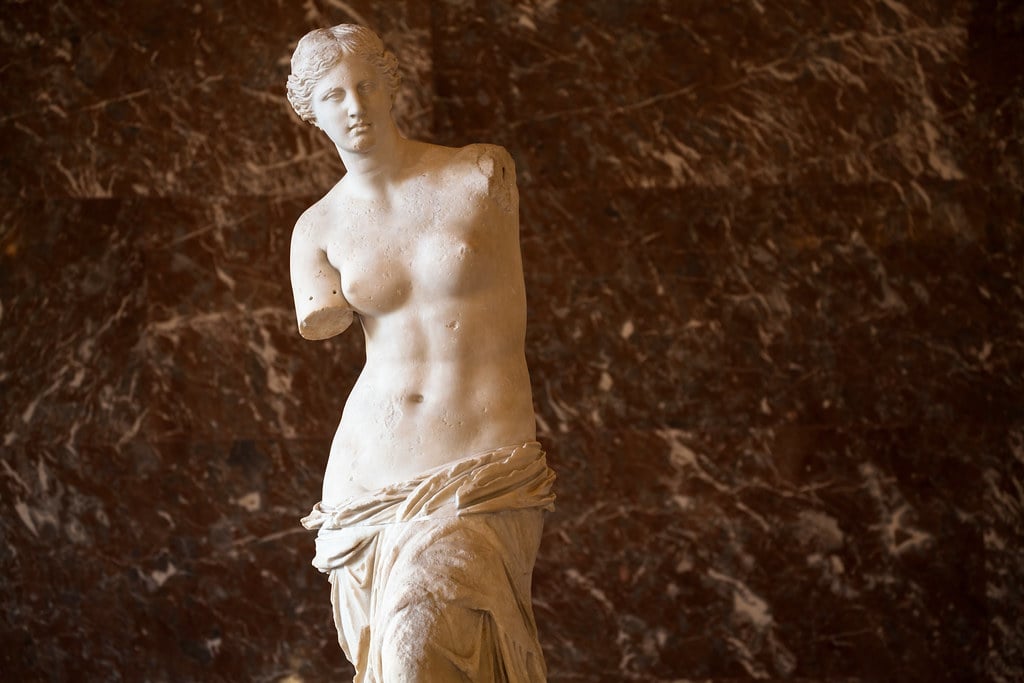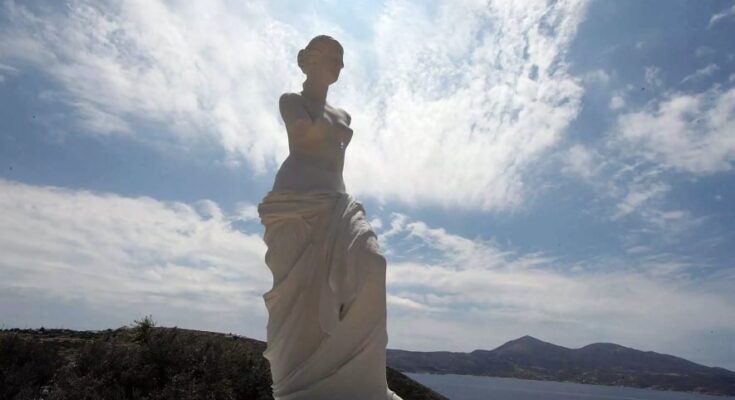A perfect replica of the breathtaking Aphrodite of Milos statue was recently revealed on the Greek island of Milos, returning to its original location after being taken by the French.
The copy is placed at the archeological site near the same place where the original was found more than 200 years ago.
The original marble statue was discovered in 1820 and ended up a year later at the Louvre Museum, Paris where is on display today.

The Aphrodite of Milos or The Venus de Milo, changed the western culture in the 19th century, creating new standards of female beauty.
Aphrodite—the goddess of love for ancient Greeks—had been depicted by artists of that time as a woman of exceptional beauty.
The Venus de Milo statue, which is one of the most beautiful interpretations of the goddess, is believed to be the work of ancient sculptor Alexandros of Antioch.
How Aphrodite of Milos statue was discovered

On April 8, 1820, farmer Giorgos (or Theodoros) Kentrotas was digging up in his field on Milos in order to unearth some stones he needed to build something.
Kentrotas instead found pieces of a marble statue which turned out to be one of the most famous statues in the world—the Venus de Milo.
Providentially, French naval officers happened to be conducting excavations for ancient artifacts nearby at the very same time.
When the pickax of the Greek farmer hit something unusual and he dug out a piece of a marble statue, two French navy sailors who were participating in the excavations took notice.
Kentrotas sensed that his discovery was valuable and tried to place the dirt back over the marble statue again, fearing that the French would take it.
However, the French were not fooled by the farmer. They gathered around his digging spot and urged him to dig further. Kentrotas complied and kept digging until all the pieces of precious marble were unearthed.
The fragments of the sculpture were moved to Kentrotas’ sheepfold while the French had already begun to communicate with consuls and ambassadors of their homelands in the cities of Constantinople and Smyrna.
French naval officer Olivier Voutier was in charge of the excavations for antiquities on the island of Milos. He had studied archaeology, so when he saw the discovery, he realized the immense value of the statue and informed his compatriots that he did not have enough money to purchase it.
Along with the Aphrodite statue, the French discovered two dedicatory plaques and a base plinth with an inscription of the name of the sculptor. The missing arms of the statue were, oddly enough, never located.
The French began official negotiations for purchasing the Aphrodite of Milo statue soon after its discovery. The initial price offered was 400 piasters, known in Greece at the time as grosi (γρόσι), the currency used by the Ottoman Empire until 1844.
Other parties then entered the negotiations, making procedures more complicated. The Ottomans and French Admiral Jules Dumont d’Urville made competing offers for the priceless antiquity, which resulted in the delay of the transfer of the statue to France.
The French finally won, and the surviving pieces of the Aphrodite of Milos were safely placed aboard a ship to be transferred to France. The beloved statue has been displayed at the Louvre Museum ever since.



